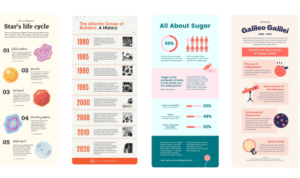User Experience Tips is all about creating seamless digital experiences that keep customers coming back for more. Dive into the world of user research, usability testing, and accessibility guidelines to elevate your product’s user experience game.
Overview of User Experience Tips

User experience (UX) refers to the overall experience a person has when interacting with a product or service, especially in the digital realm.
Good user experience is crucial in digital products because it directly impacts how users perceive and engage with the product. A seamless, intuitive, and enjoyable experience can lead to increased user satisfaction, higher engagement, and ultimately, improved business outcomes.
When digital products prioritize good user experience, it can result in higher customer satisfaction and loyalty. Users are more likely to return to products that are easy to use, efficient, and meet their needs effectively. This positive experience can lead to repeat business, referrals, and long-term customer relationships.
Importance of User Research
User research plays a crucial role in improving user experience by providing valuable insights into the needs, preferences, and behaviors of the target audience. By understanding user expectations and pain points, designers can create products and services that are tailored to meet user needs effectively.
Methods for Conducting User Research
- Interviews: Direct conversations with users to gather in-depth insights.
- Surveys: Questionnaires to collect feedback from a larger group of users.
- Observation: Studying users in their natural environment to understand behavior.
- User Testing: Testing prototypes with real users to identify usability issues.
Role of User Personas in Designing Better User Experiences, User Experience Tips
User personas are fictional representations of target users based on research data. They help designers empathize with users, make informed design decisions, and prioritize features that align with user needs. By creating user personas, designers can ensure that the end product resonates with the intended audience, leading to a more user-centric design approach.
Usability Testing Best Practices
When it comes to creating a killer user experience, usability testing is the secret sauce that can take your design from good to great. By putting your design in front of real users and getting their feedback, you can identify pain points, streamline workflows, and ultimately create a product that users love.
Importance of Usability Testing
Usability testing is crucial for understanding how real users interact with your product. It helps you uncover any usability issues, identify areas for improvement, and validate design decisions. By conducting usability tests, you can ensure that your product is intuitive, user-friendly, and meets the needs of your target audience.
- Recruit a diverse group of participants to get a range of perspectives.
- Set clear goals and objectives for each test to stay focused.
- Use realistic tasks and scenarios to simulate how users would actually use the product.
- Encourage participants to think out loud to understand their thought process.
Planning and Conducting Effective Usability Tests
To plan and conduct effective usability tests, it’s important to follow a structured process that includes defining objectives, creating test scenarios, recruiting participants, conducting the test, and analyzing the results. By following these steps, you can gather valuable insights and make informed design decisions.
- Define clear objectives and goals for the test to focus your efforts.
- Create realistic test scenarios that reflect how users would interact with the product.
- Recruit participants who represent your target audience to ensure relevant feedback.
- Conduct the test in a controlled environment and observe participant behavior closely.
Analyzing Usability Test Results and Iterating on Design Improvements
Once you have conducted usability tests, the next step is to analyze the results and iterate on design improvements based on user feedback. By identifying patterns, trends, and pain points, you can prioritize design changes that will have the most impact on user experience.
Remember, usability testing is an ongoing process, so be prepared to iterate on your design based on user feedback and continue testing throughout the development cycle.
Accessibility Guidelines for Better User Experience: User Experience Tips

When it comes to user experience design, accessibility plays a crucial role in ensuring that all users, regardless of their abilities, can easily access and interact with a website or application. Designing with accessibility in mind not only helps individuals with disabilities but also enhances the overall user experience for everyone.
Key Accessibility Guidelines
- Provide alternative text for images: Descriptive alt text for images ensures that visually impaired users using screen readers can understand the content of the image.
- Use proper heading structure: Organize content using heading tags (h1, h2, h3, etc.) to help screen readers and assistive technologies navigate the page.
- Ensure color contrast: Maintain sufficient color contrast between text and background to improve readability for users with visual impairments.
- Implement keyboard navigation: Make sure all interactive elements can be accessed and operated using a keyboard for users who cannot use a mouse.
- Provide captions for multimedia: Include captions or transcripts for videos and audio content to assist users who are deaf or hard of hearing.
Impact of Accessible Design
Creating accessible designs not only benefits users with disabilities but also enhances the user experience for a diverse audience. By following accessibility guidelines, designers ensure that their products are usable by a wider range of individuals, leading to increased user satisfaction and engagement.









